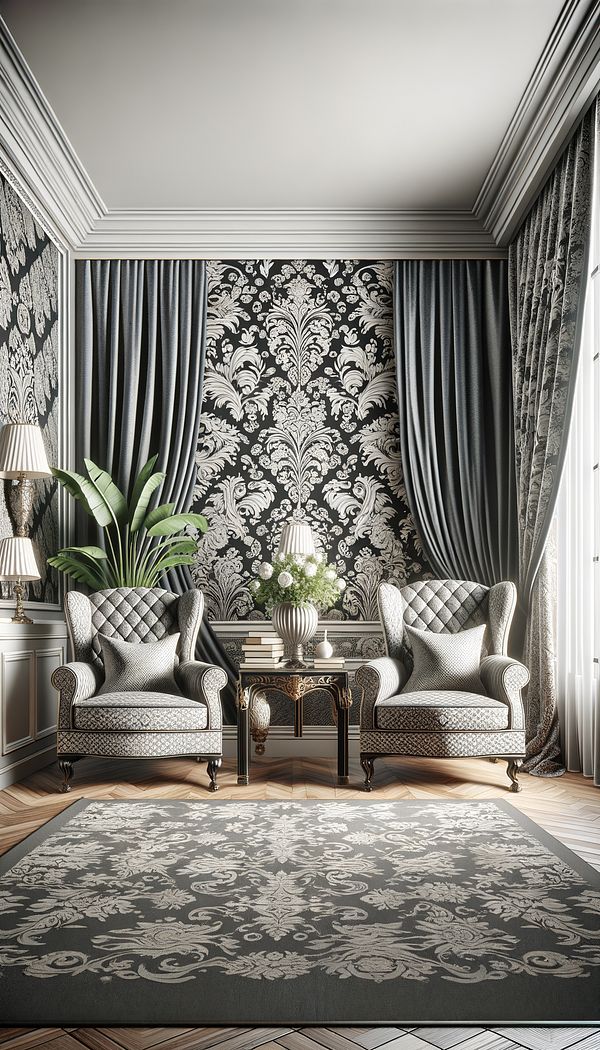What is Damask?
Damask is a woven fabric known for its intricate patterns and quality.
Description
Damask is a rich, versatile fabric characterized by its distinctive woven patterns. Originating in the early Middle Ages in Damascus, Syria - hence the name - this luxurious material was initially made of silk. Today, however, it encompasses a broad range of fibers including cotton, wool, linen, and synthetic blends, making it accessible for various uses. The fabric's hallmark is its method of weaving, which creates a subtle contrast between matte and sheen surfaces. This is achieved by weaving a combination of satin and twill weaves or sometimes satin with a plain weave. The contrasting weave allows patterns, usually of flowers, fruits, animals, and other elaborate designs, to emerge in a subtle sheen against a matte background, giving it a three-dimensional appearance. Damask is celebrated not only for its aesthetic appeal but also for its durability and versatility in interior design. It's a popular choice for window treatments, wall treatments and finishes, and textiles and upholstery, bringing a touch of elegance and luxury to any space.
Usage
Damask is often used in high-end interior design projects to create luxurious window treatments such as draperies and curtains. It is also popular for upholstering furniture and as wall coverings. In more contemporary settings, damask patterns can also be found in accessories such as throw pillows and bed linens, providing a classic touch to modern decor.
FAQs
-
Can damask fabric be used for upholstery?
Yes, damask is commonly used for upholstery due to its durability and intricate designs, making it an ideal choice for furniture pieces that stand out.
-
Is damask fabric only available in traditional patterns?
While traditionally known for its intricate floral and ornate patterns, modern damask fabrics also include contemporary designs, offering versatility for various interior design styles.
-
Are there eco-friendly damask options?
Yes, eco-friendly damask fabrics made from organic cotton, linen, and other sustainable materials are available, catering to environmentally conscious interior design.
Practical Application
When incorporating damask into your design, consider the scale of the pattern in relation to the space and furnishings. Larger patterns work well in spacious areas or as focal points on significant pieces of furniture, while smaller designs can add texture and interest to smaller items or in tighter spaces. Additionally, mixing damask patterns with solid colors can prevent the decor from feeling overwhelming, creating a balanced aesthetic.
-
Window Treatments65 articles
-
Textiles & Upholstery252 articles
-
Wall Treatments & Finishes157 articles
-
Tongue & GrooveTongue & Groove is a method of fitting similar objects together, edge to edge.
-
Antique SatinAntique satin is a type of woven fabric known for its glossy surface and dull back.
-
PilasterA pilaster is a rectangular column that projects partially from the wall to which it is attached.
-
StuccoStucco is a type of plaster used as a coating for walls and ceilings.
-
Lay OffLay off is the process of applying a final, very thin coat of paint or varnish in a specific manner to ensure a smooth finish.
